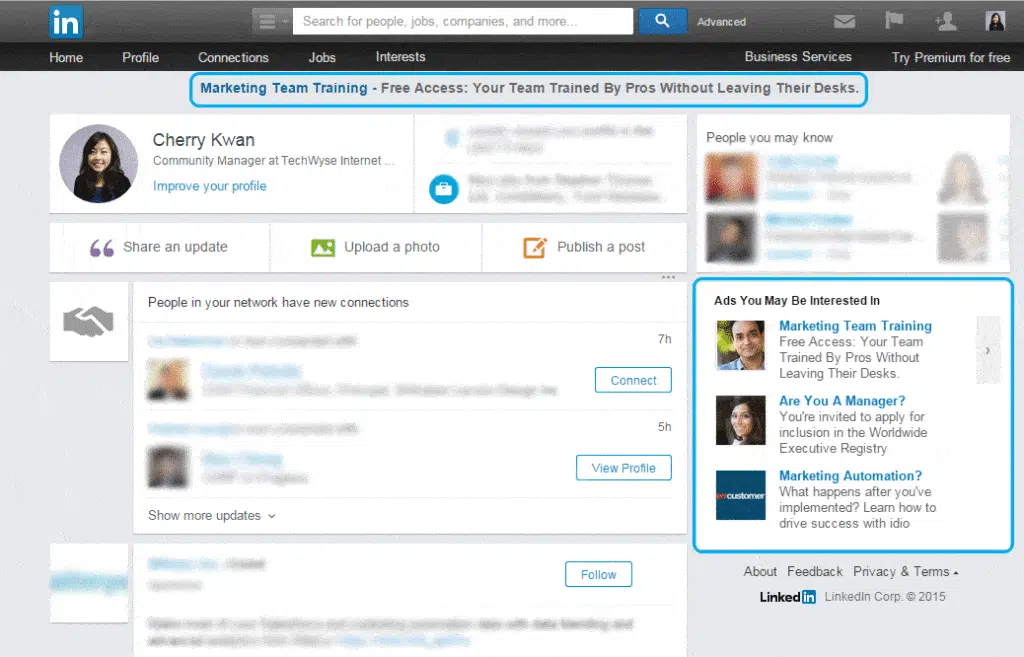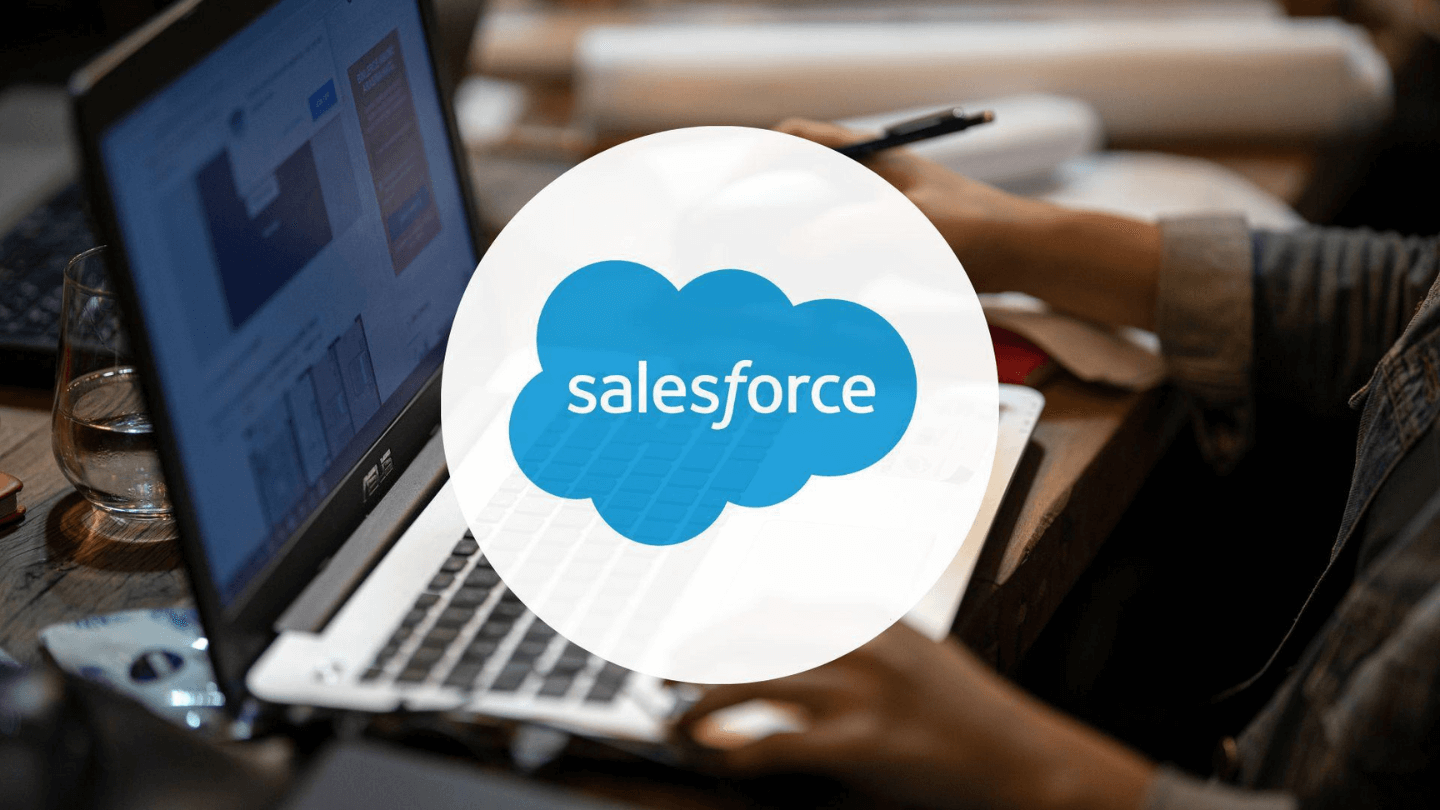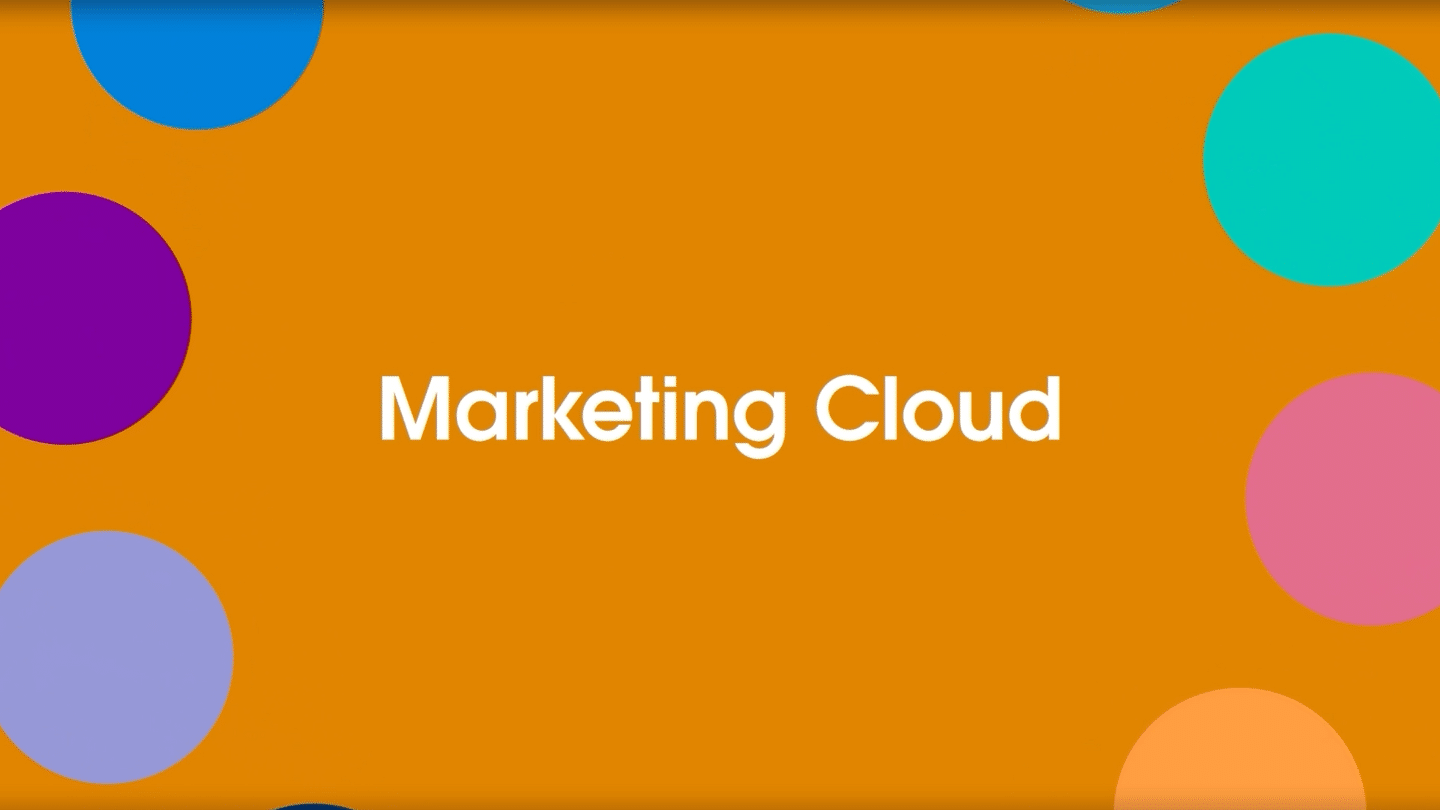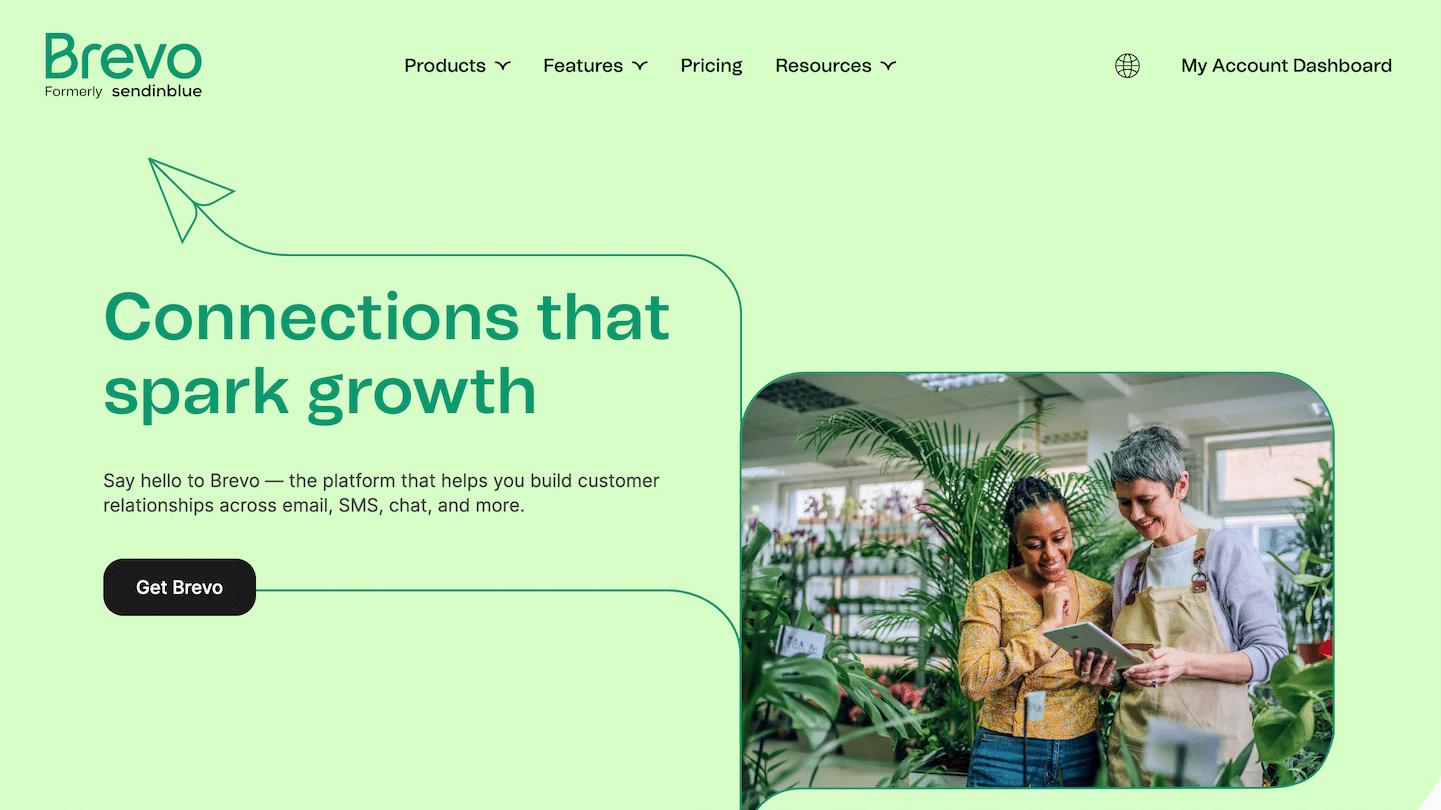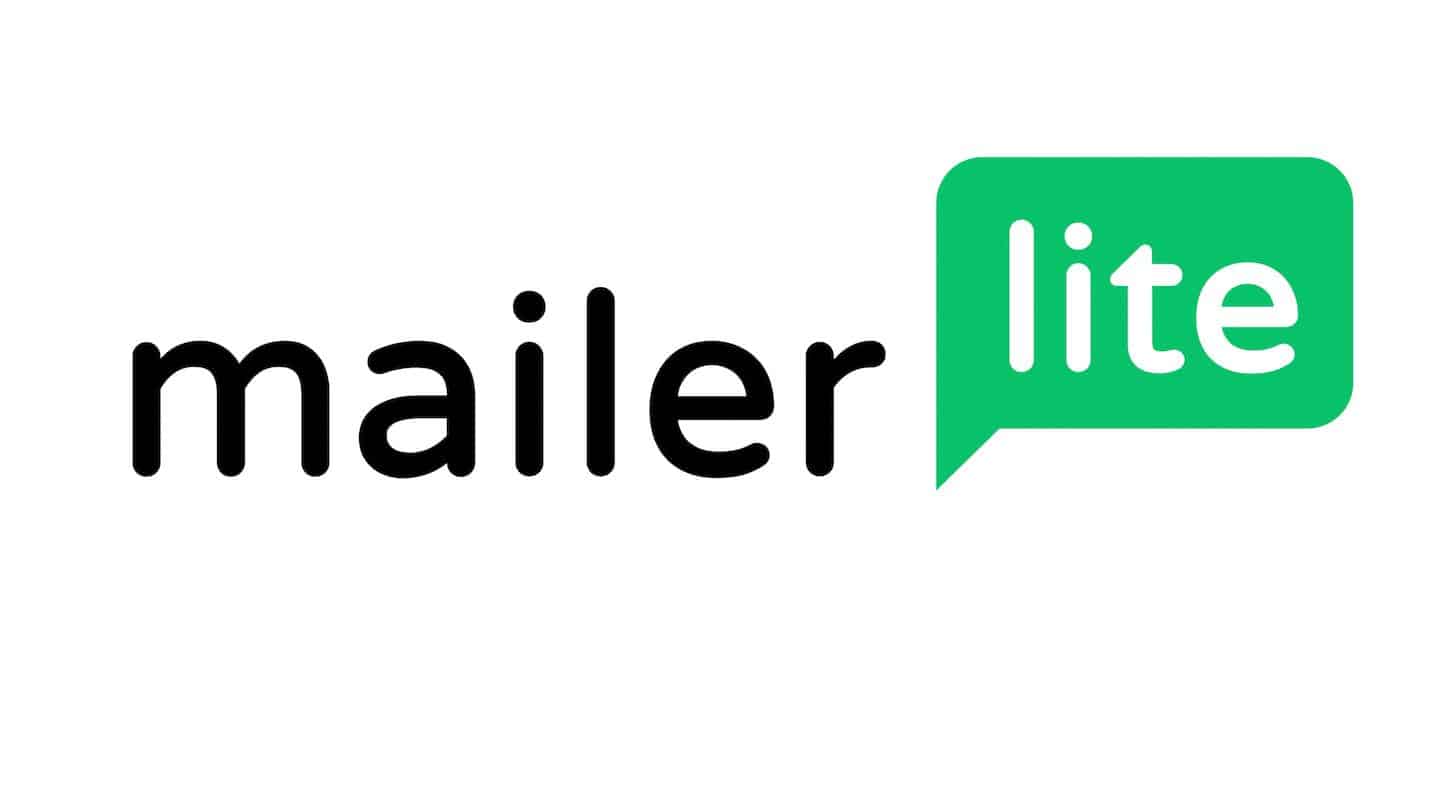Recently, many B2B marketers have been concerned about their ability to generate leads on social networks. In addition, recent changes to Facebook and Twitter algorithms to improve the user experience are somewhat limiting the organic reach of posts made by brands. But don’t panic! LinkedIn is a goldmine for generating leads, promoting content and driving traffic to business websites. We’ve put together this comprehensive guide to perfecting your B2B marketing strategy on LinkedIn.
Sommaire
Why is LinkedIn B2B marketing perfect for brands?
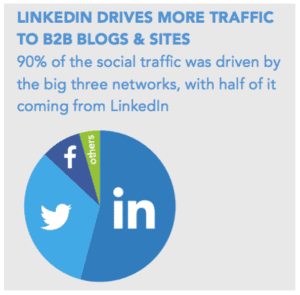
Prospectors” are already exploiting the potential of LinkedIn in terms of B2B marketing:
- LinkedIn accounts for 64% of the traffic to company websites via social networks.
- 93% of B2B marketers now consider LinkedIn to be the most effective lead generation site.
The platform has announced a 60% increase in its engagement rate.
LinkedIn Ads, to go faster and further
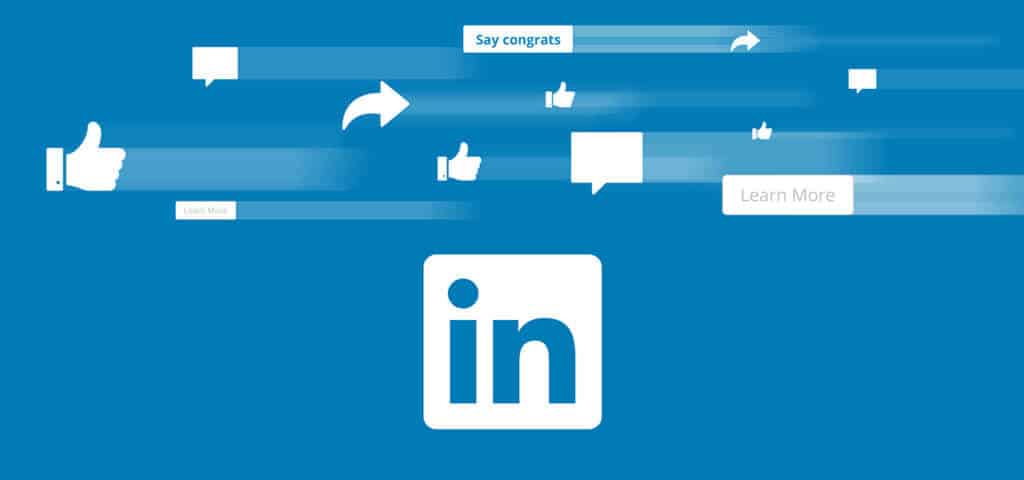
LinkedIn has added functionality to its already powerful marketing offering to enable B2B marketers to contact prospects.
In particular, the social network allows users to filter their searches more precisely and to target their publications effectively using user data. LinkedIn has also introduced a powerful new video ad format and new content options, becoming more than ever a reference among B2B marketing platforms.
Best practices in B2B marketing on LinkedIn?
LinkedIn’s main rule for companies is: think before you act.
Firstly, it is essential that you have filled in the basic elements of your LinkedIn company page.
Secondly, develop a strategy to keep your marketing efforts focused on your end goal.
“The lack of a clear strategy is the biggest mistake. Users subscribe to LinkedIn, but they don’t have a clear plan for how they are going to use it.”
– Steve Phillip, LinkedIn expert
Train your teams

Make sure your team is aware of the services LinkedIn offers.
You can use this article as a starting point, but be sure to dig deeper and consider training to make sure everyone is on the same page regarding the B2B marketing capabilities of LinkedIn.
Stay focused
Once the initial buzz of your LinkedIn presence wears off (and it often does), it’s common to lose momentum if you don’t get results quickly. It’s essential to realise that like any marketing venture, the process of B2B marketing on LinkedIn takes time to develop and settle in order to make your investment pay off.
Identify decision-makers
Be specific about who you want to connect with on LinkedIn. Think about the industry, location, job titles of decision makers, etc.
Design your content strategy around what prospects are interested in and the value you add to them.
Define a strategy
Be sure to create a roadmap for every aspect of your LinkedIn marketing strategy, including how, what and when to post.

Also consider reading LinkedIn’s excellent Content Marketing Manual, which provides detailed analysis, templates and checklists to help you with your B2B marketing strategy on LinkedIn.
Be prepared
According to Joe Pulizzi of the Content Marketing Institute, marketers with a documented strategy are four times more effective, but only 28% of marketers have a documented content marketing strategy. You can find a useful resource on this subject by following this link.
Our guide to a successful marketing campaign on LinkedIn:

1. Make the content relevant: your content should show how your product or service has helped the client companies.
2. Don’t be too sales-focused: make 50% of your content about your brand, and 25% about your industry.
3. Show yourself to be human: dedicate 25% of your content to topics that touch you personally so that people see you as an individual and not just as a pawn of a faceless company.
4. Make sure you post content regularly: it is advisable to post at least once a day, but whatever frequency you choose, stick to it and post content regularly.

5. Involve your employees: make sure that other employees comment on and share the content you publish – this can greatly expand your organic reach.
6. Use keywords: using the “Specialties” section of your LinkedIn company page, add keywords related to your company to appear in related search results.
7. Identify your prospects: Use LinkedIn’s powerful search tools to locate potential buyers and determine their needs so you can better target your LinkedIn advertising campaigns.
8. Track engagement rates: use your company’s analytics page to identify your best performing publications to help you develop future content strategies (see LinkedIn & LinkedIn Analytics entry below).
How to get the most out of your marketing campaigns on LinkedIn?
From text ads, to sponsored video ads or InMails, LinkedIn offers marketers a wide range of possibilities, all accessible via the LinkedIn campaign manager.
The platform also offers extremely powerful analytics and targeting tools, turning LinkedIn into a powerful marketing tool.
But what LinkedIn advertising options are actually available and why should you deploy them?
LinkedIn Text Ads
LinkedIn text ads appear at the top right of users’ feeds and include a short copy of the ad, as well as an optional small image. Source: LinkedIn Business
What? Basic but effective ad with an optional 50×50 image, a title of maximum 25 characters and a description of maximum 75 characters.
Why? Ideal for targeting specific audiences, searching for candidates and increasing traffic to your website/landing pages.
LinkedIn best practices :
- Grab your audience’s attention with headlines that address them directly and make a clear value proposition.
- Don’t sell your products/services directly: help, educate and inform before you sell.
- Always add an image, as it generates 20% more clicks. Also use profile pictures, as they are more effective than logos or objects.
- Make sure your call-to-action is clear and well-written and includes keywords specific to your target audience.
- If possible, include your company name in your offer to increase brand awareness among those who do not click on your LinkedIn ad and will therefore be considered “impressions”.
- Create a specific landing page for the text ad that reflects the appropriate branding, messaging and offers. Don’t just let your prospect come to your landing page and leave.
LinkedIn sponsored content
LinkedIn sponsored content is essentially a normal post that you optimise with an advertising budget. Source: LinkedIn
What? This is usually a company page highlight with a title of 150 characters or less, an introduction of 70 characters or less and an image of size 1200 × 627 recommended to increase CTR.
Why should you do this? Ideal for increasing your subscriber base, proving your credibility, raising awareness of events and generating leads.
LinkedIn best practices :
- Address your target audience directly in the title: according to a LinkedIn study, the CTR is 19% higher and the conversion rate 53% higher.
- Make sure your headline is accurate and contains statistics where possible. Shorter content leads to an 18% increase in engagement, while the use of statistics generates 162% more impressions.
- Create an impactful call-to-action so that the audience understands how they should act once they have digested your content.
- Enable Lead Gen forms: these collect a member’s profile data, such as job title, contact details, etc., into a single form which the member can then send to you with a single click (this information is also available in Sponsored InMail. -See below).
Sponsored LinkedIn InMail

Sponsored LinkedIn InMails allow you to send personalised private messages to users. Source: LinkedIn
What? A private InMail message featuring the sender’s name (ideally 25 characters or less) with a subject line (ideally 30 characters or less), body copy (ideally 500 characters or less) and a call-to-action (ideally 25 characters or less) plus a 300 × 250 image, which are sent directly to the LinkedIn inboxes of your targeted members.
Why? Ideal for personalised invitations to events and webinars, promoting downloadable content such as white papers and speaking directly to targeted prospects.
LinkedIn best practices :
- Send your message via a company employee’s profile, not the company page, to create a more human message. Such an approach can increase open rates by 16%.
- Make sure that the sender’s position is related to your offer for credibility and relevance. If you are sending an IT-related message, send it through the IT manager or another technical employee.
- Include relevant links in your body copy and add a separate call-to-action. This can increase the click-through rate by 21%.
- Make sure your body text is brief and relevant to the person you are sending it to, and keep it personal throughout. Also, remember that body text under 500 characters has a 46% higher CTR.
Over 85% of LinkedIn engagement comes from mobile devices, so make sure all landing pages and messaging have been optimised for mobile devices, regardless of the ad format used.
Dynamic LinkedIn ads
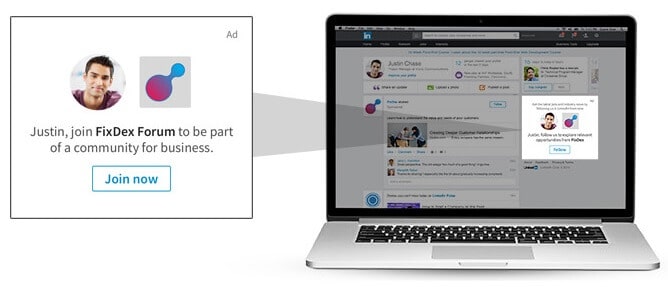
LinkedIn’s dynamic ads adapt to each user who sees them dynamically. Source: LinkedIn
What? An advertisement that dynamically changes its content and image according to the target person.
Why? Ideal for attracting new subscribers to your company page and highlighting targeted job opportunities based on users’ career history.
LinkedIn best practices :
- Enable the option to display the profile picture of the person viewing your ad. This will display their photo next to yours, creating a 100% higher click-through and conversion rate.
- Do not use your company logo as a profile picture. Instead, replace it with the face of the person who will communicate with users if they click on it. You can also try to use an image related to your theme to draw attention to your ad.
LinkedIn video ads
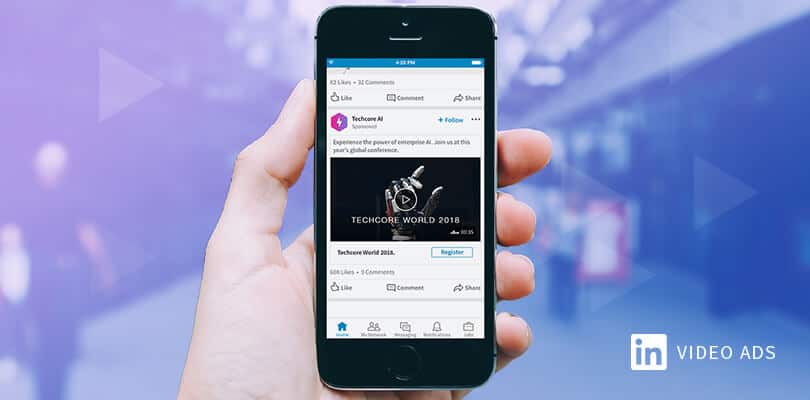
LinkedIn video ads appear in users’ feeds and are played automatically by default in silent mode. Source: LinkedIn
What? A video announcement (at last!) that is automatically triggered in members’ feeds without sound, but offers users the possibility of activating the sound if they wish.
Why? Ideal for building brand awareness through storytelling, positioning your brand as an expert, showcasing products or services, and promoting events and webinars.
LinkedIn best practices :
- Keep your LinkedIn video ads under 30 seconds: according to an internal LinkedIn report, ads of 30 seconds or less have a 200% increase in view completion.
- Make sure you get your main message across in the first 10 seconds: Internet users have a short attention span.
- Expect exceptions to the above rules! For example, Generation Z is more patient and will watch longer videos if you describe a more complex product or story in detail. The best practice is to test to find the ideal length.
- If your budget allows, make your video more effective by adding text, effects etc.
LinkedIn targeting and segmentation
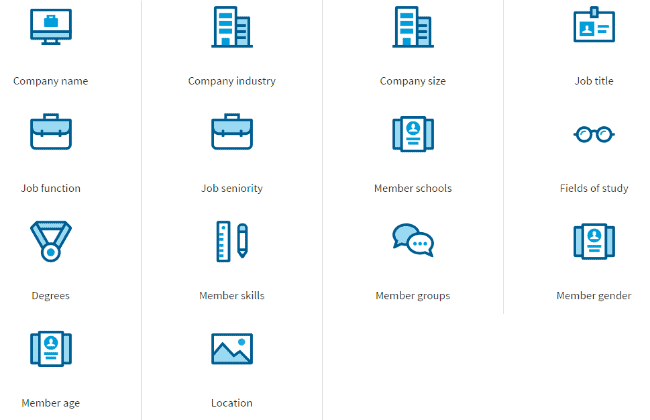
LinkedIn allows you to target users based on a wide range of criteria. Source: LinkedIn Business via Marketing Mojo
With so many ad formats available, the question is how to effectively deploy your LinkedIn ads to ensure they find their audience.
LinkedIn offers a wide range of targeting and segmentation tools that allow marketers to explore the specifics of different profiles and create tailored campaigns.
LinkedIn recommends choosing two targeting options for individual campaigns with a rental.
The platform offers classic targeting options such as gender, age etc. but with a host of additional options:
Company name – industry sector – company size – subscribers – position held – seniority – years of experience – and much more.
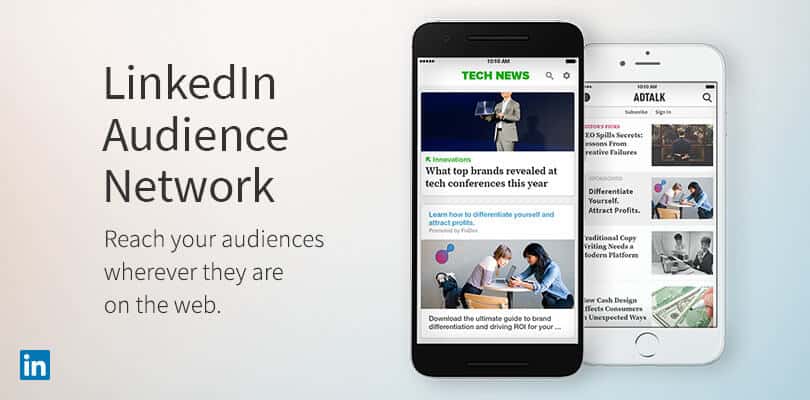
Audience Network, another powerful targeting option, allows marketers to serve ads to LinkedIn users as they browse other websites. Source: LinkedIn Business
Marketers can also use LinkedIn’s Audience Network feature to reach an audience beyond LinkedIn’s borders by delivering sponsored content to a network of validated publishers.
But perhaps most exciting for marketers is LinkedIn Matched Audiences, an advertising service that offers three powerful features related to targeting and retargeting on LinkedIn.
Firstly, there are two main targeting options: account-based targeting, which offers the ability to target individual decision-makers in specific companies, and contact-based targeting, which allows a company to import CRM contacts or use email lists and then target the decision-makers found in those companies.
Finally, marketers can retarget visitors to the company website to further increase lead generation rates.
There is a 32% increase in conversion rate when using LinkedIn account targeting.
Time for a test
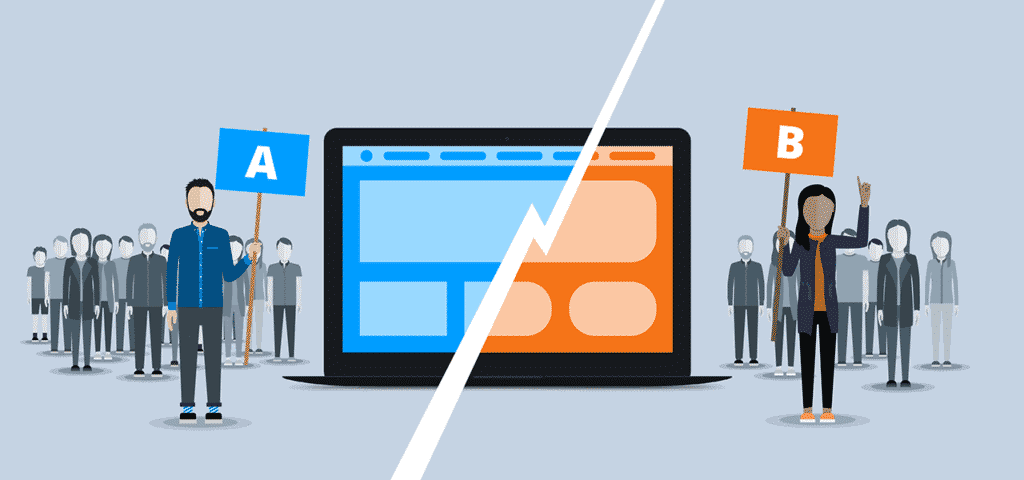
Having great content and an effective targeting strategy is only the first half of the story.
The other half?
Test your LinkedIn marketing and advertising campaigns to make sure they work for you. Some tips:
- Find the right balance between targeting your audience too narrowly and aiming too broadly. Use A/B tests to find your ideal balance.
- For each ad, consider creating two or three versions of ads to determine which one performs best. Remember to test different variables in the ads to ensure you get meaningful results. For example, test two different images, then two titles, etc.
- Pause your worst performing ad every one to two weeks and replace it with a new one. This will help to increase the relevance score of your ad.
LinkedIn insights & LinkedIn analytics
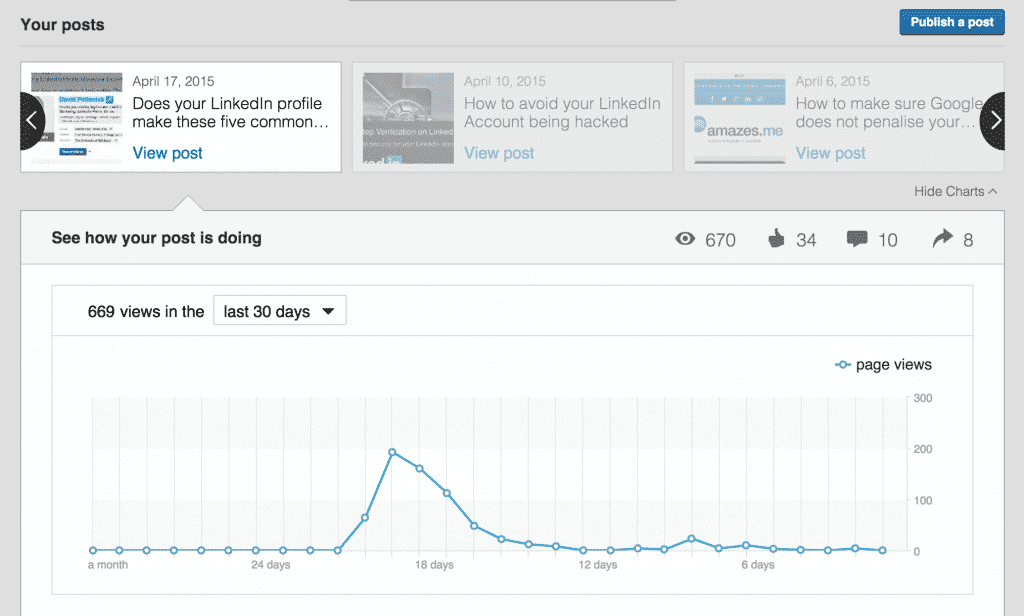
LinkedIn has a wealth of analytics to explore, from content performance indicators to subscriber growth trends. Source: LinkedIn Blog
To help marketers, LinkedIn offers a company page analytics service for in-depth analysis of campaign and post performance.
LinkedIn analytics allows you to see click-throughs, engagement rates, and key trends that can help you in the future.
LinkedIn insights allows you to analyse your audience’s jobs, identify their demographics, length of service, job function, and company size and industry.
From there, you can identify your best performing ads and identify where you need to improve your content. The data you get on your audience can be added to your content plan to feed your next campaigns.
It is this level of detail that, if fully exploited, makes LinkedIn’s B2B marketing so powerful.
More information on LinkedIn analytics can be found here.
So how much do LinkedIn ads cost?

While the average CPC on LinkedIn is quite high, the average CPM on LinkedIn is lower than many other social networks. Source: How much do social media ads cost?
The sheer number of options available begs the question: what is the price of a real advertising campaign on LinkedIn?
As is often the case with other social platforms, there is no real defined cost. Instead, a bidding system is used that allows for self-service ads with different types of costs:
- Cost per click (CPC, ideal for generating traffic and leads)
- Cost per 1,000 impressions (CPM, ideal for increasing brand awareness)
- Cost per view (CPV, ideal for increasing LinkedIn video views)
- The exception? Sponsored InMail, which only charges you when your message is delivered.
Choose the method you prefer, then participate in LinkedIn’s auction process. This will determine which advertisers will have the honour of having their ad appear in users’ news feeds from those who have targeted the same audience.
The higher your bid and your relevance score (based on engagement rates and many other variables), the greater the chance that your bid will be successful. For more information on the auction process, see this:
It is worth bearing in mind that LinkedIn’s CPC price is generally higher than that of other platforms.
The good news?
Conversion rates are also higher. According to specific client data from Seer, the average CPC for Google AdWords was $2.56, compared to $12.88 for LinkedIn, but conversion rates on LinkedIn were higher at 0.77% compared to 0.65% for AdWords.
In addition, LinkedIn generates more B2B leads than Facebook or Twitter.
This means that if you are looking for the most effective platform for B2B lead generation, LinkedIn should be your priority.
Budgetary issues
You can set your own budget, bids and schedule your posts on LinkedIn. If you need to stop your advertising, you can do so whenever you want. This means you are in control of your results at all times.
Things to remember about LinkedIn B2B marketing
If you’ve ever had doubts about the effectiveness of LinkedIn as a marketing tool, you should now put them aside. To get the most out of your campaigns, remember:
- Develop a detailed content plan so that your LinkedIn marketing strategy has the best chance of making an impact, don’t rush in without any preparation.
- Identify the ad formats that best suit your strategy. You may find that a combination of different formats is more effective for your campaign.
- Make sure your marketing messages are targeted to the right people based on a comprehensive content plan and perform frequent A/B testing to ensure your campaign ads always hit the mark.
- Use LinkedIn’s powerful analytics to identify the successes (or failures) of your marketing plan, adjusting and modifying metrics as necessary, while gleaning valuable insights that can be deployed in future campaigns.
- Watch your budget and don’t be afraid of LinkedIn’s auction process. Although auctions may seem expensive, the platform’s conversion rates are higher than other platforms.

